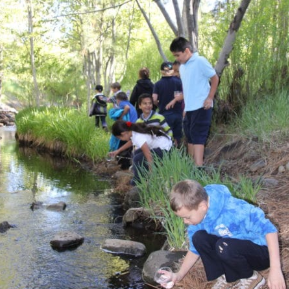PRACTICE BRIEF #1
Taking Students Outdoors
Exemplary Approach: Outdoor Learning
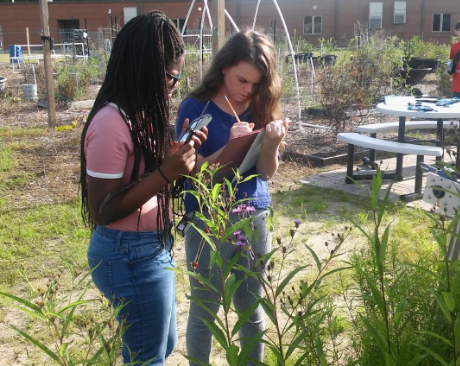
The schoolyard offers phenomena to observe, opportunities for real world problem solving, and context for understanding science concepts. Struggling students who are least adept in the classroom are often focused and effective at learning outdoors.
Connecting children with nature also has other benefits, from providing physically-active brain-breaks to inspiring wonder and curiosity. And schoolyard projects provide opportunities to hone 21st century skills such as collaboration, creativity and communication.
Teaching Hacks

hacks
n.
1. Clever and elegant technical accomplishments, especially with a playful bent. Innovative and creative strategies that may use materials for purposes other than their original intent.
2. Temporary or improvised solutions that prove to be sound and effective.
1. Start Simple: Go for a Walk
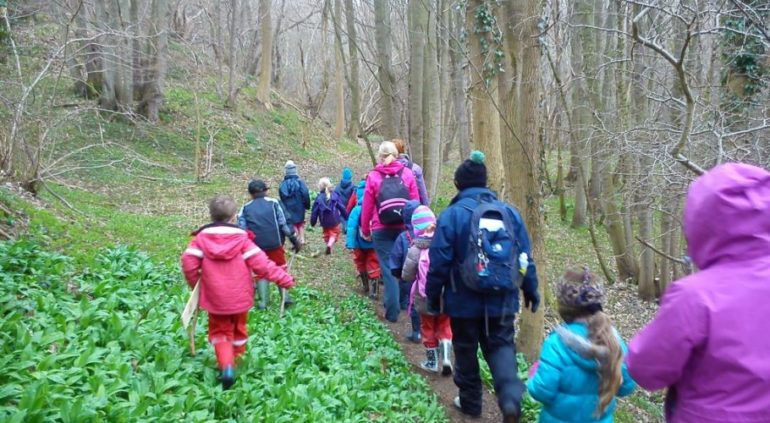
The key to making an outdoor experience productive - while leaving room for discovery and exploration - is to make the mission clear in advance. If you are engaging students in a particular investigation or outdoor lab, explain and organize it in the classroom, in advance.
No particular lesson in mind? Two apps can lend structure and purpose to your adventures outdoors. "Seek by i-Naturalist" generates beautifully illustrated lists of organisms students may be able to find nearby, and awards digital badges for confirmed sightings. "GooseChase" offers teachers a chance to create team scavenger hunts, for free. Both of these tools bridge the electronics / nature divide, and provide effective ways to focus our digital-native students on the world all around them.
2. Record Observations in Science Journals
Science journals are a great tool for recording data, making observations, constructing explanations, collecting specimens, sketching organisms, arguing from evidence, planning projects, or reflecting on learning experiences.
In addition, science journals can offer a familiar routine that launches and closes every outdoor learning adventure. Avoid the confusion of students arriving at an outdoor learning site without knowing what to do by setting them up for success in advance. Assign a silent observation or listening task that students write about in their journals for ten minutes, starting as soon as they reach the outdoor learning area.

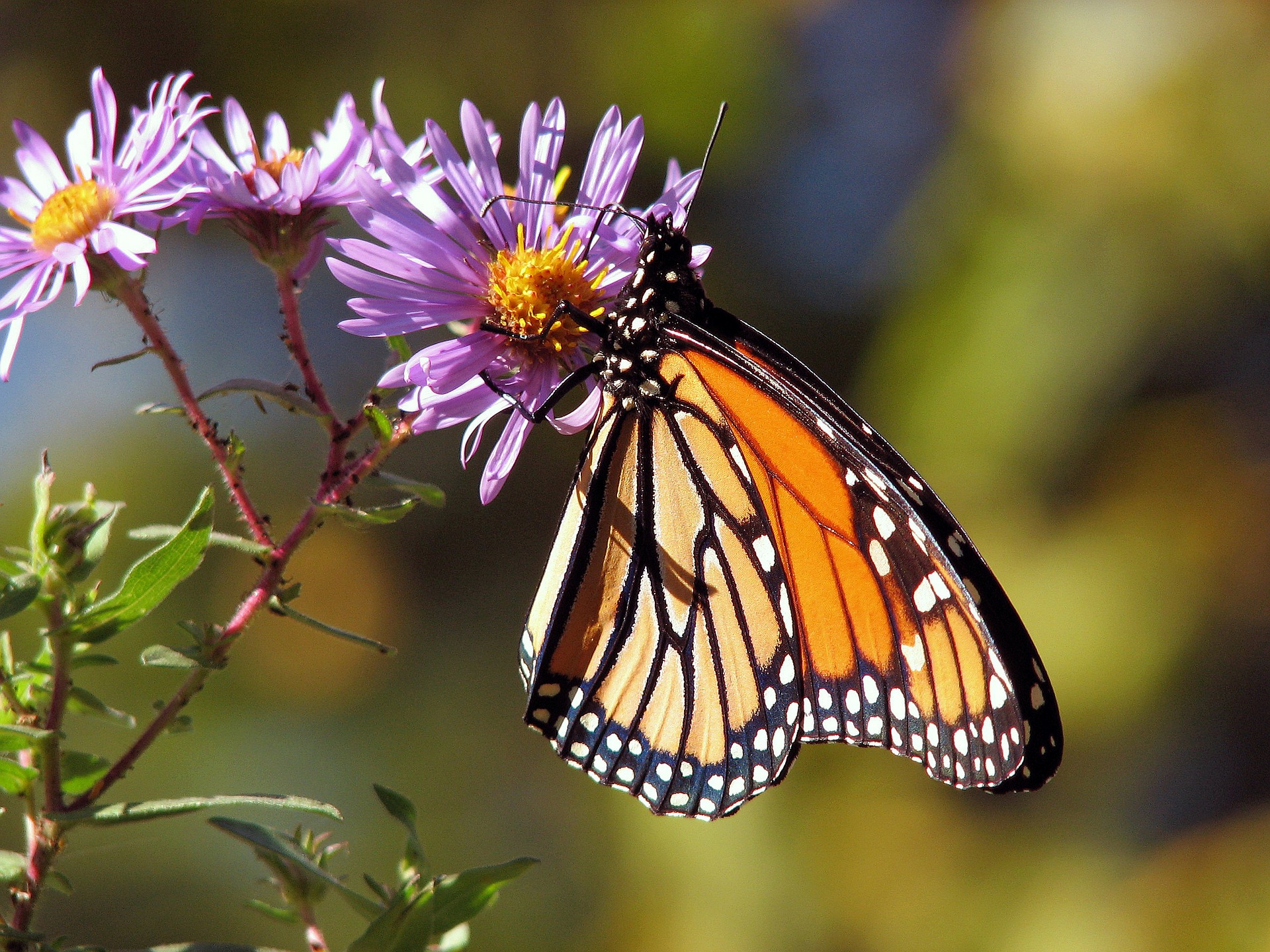
3. Engage Students as Citizen Scientists
Scientists around the world are crowd-sourcing data collection and turning to students for help with their research. And kids who participate in authentic, real-world citizen science investigations learn to use science practices and think like researchers. It's a win-win situation!
Finding a project that matches your student learning objectives is easy. Check out databases such as CitizenScience.gov; SciStarter; and Zooniverse to discover how students can contribute to real research. From observing trees for sins of climate change (Project BudBurst) and searching for an endangered species of beetle (The Lost Ladybug Project); to monitoring water quality (Adopt-A-Stream) and manipulating proteins in novel ways (FoldIt), there are citizen science projects related to biology, environmental science, physics, earth science, archaeology, and many other fields. Here are a couple to get you started:
4. Gardens are the Gateway
Gardens are gateways to the great outdoors. For many teachers, the lure of gardening leads them to provide students with their first learning experiences without walls. Whether growing fruits and vegetables, herbs or flowers, gardens offer purpose and structure for expeditions outdoors.
Gardens also present a blank canvas that can be used to teach many subjects in a real world context. Whether students are using the Pythagorean Theorem to square the frames of garden beds; trying out authentic techniques to grow crops raised by Native Americans tribes; designing experiments to see which root systems hold soils; or investigating which types of wildlife share the schoolyard with students; the opportunities for exploration and discovery in a garden are endless.
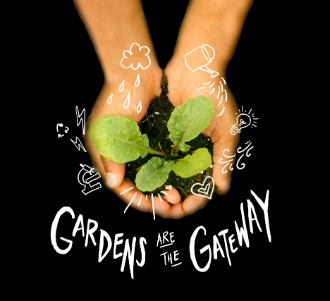
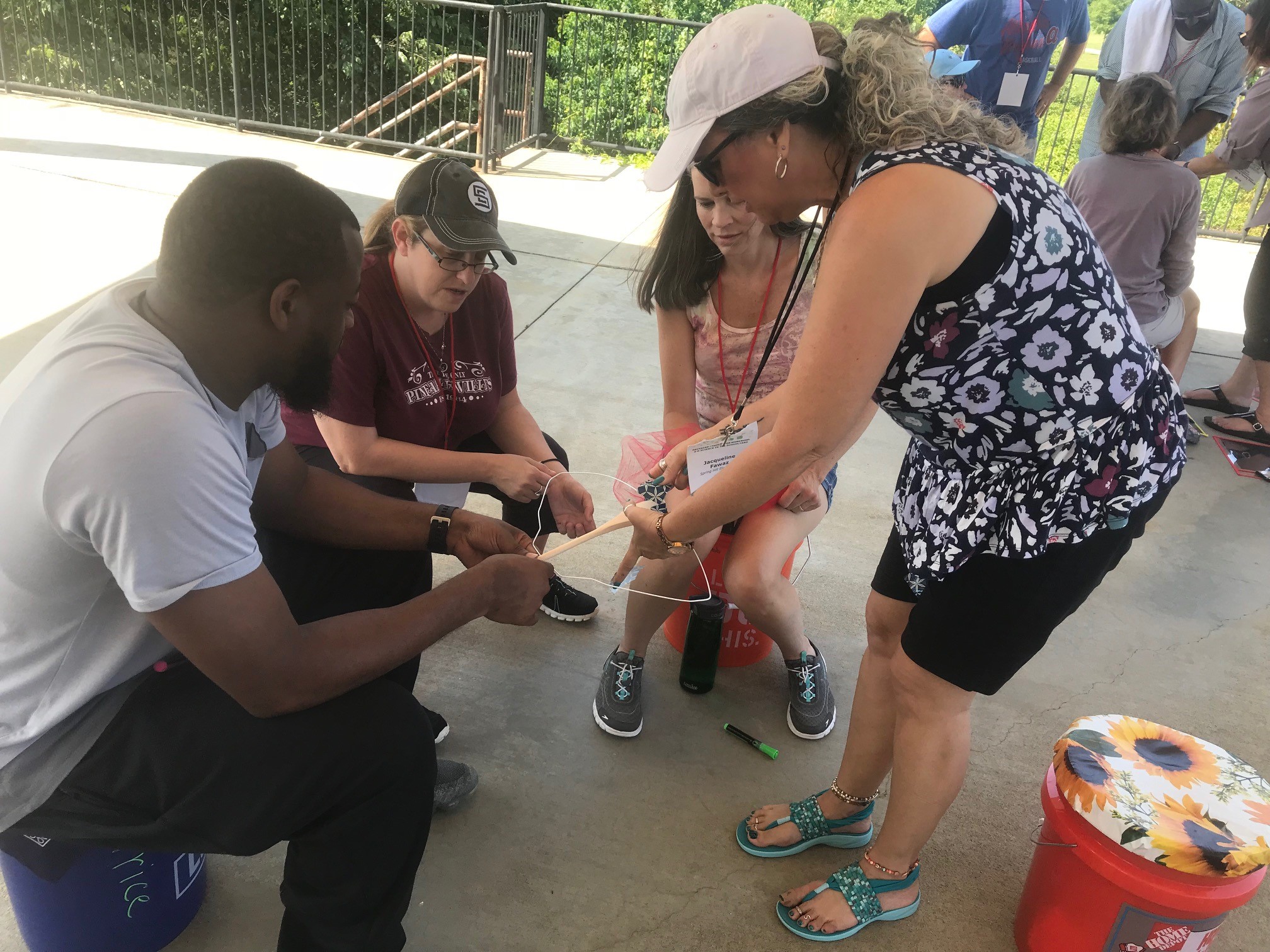
5. Create a Portable Outdoor Classroom
Clipboards sub for desks and used 5-gallon buckets make great seats. "Bucket seating" has the further advantage of providing a great way to carry supplies for scientific investigations - from bug viewers and tape measures to digital scales and mini-microscopes. Check out the How-To guide below for directions on transforming a bucket lid into a comfy waterproof cushion.
Alternatively, old cable spools can be donated as tables for outdoor labs. Outdoor learning areas need not be expensive or complicated. In fact, amphitheaters or fixed seating with a podium in front are far less engaging places for schoolyard investigations than more flexible, informal arrangements.
Research-informed Practice
The practice of taking classes outdoors is backed by research that shows students learn more effectively when they have a real-world context for understanding concepts and ideas. In addition, research indicates that learning outdoors can improve behavior, physical well-being, connection with nature, and sense of self-efficacy.
Other 'Down to EARTH' Briefs
You may also like . . .
GREAT Project Pathways
For more extended outdoor learning experiences, check out GREAT Project Pathways. This model makes project-based learning do-able by providing storylines that engage students in data collection and real world investigations, as they make sense of scientific phenomena in nature. With multiple options for "voice and choice" at each step along the way, students work in small teams to direct their own learning. Ultimately, each team proposes a solution to a problem in the schoolyard and the class selects a project to implement together. Topics range from Water Quality and Biodiversity to Renewable Energy and Introduced Species, with new projects pathways planned for the future.
PRACTICE BRIEF #1
Taking A Class Outside
Exemplary Approach: Outdoor Learning

The schoolyard offers phenomena to observe, opportunities for real world problem solving, and context for understanding science concepts. Struggling students who are least adept in the classroom are often focused and effective at learning outdoors.
Connecting children with nature also has other benefits, from providing physically-active brain-breaks to inspiring wonder and curiosity. And schoolyard projects provide opportunities to hone 21st century skills such as collaboration, creativity and communication.
Teaching Hacks

hacks
n.
1. Clever and elegant technical accomplishments, especially with a playful bent. Innovative and creative strategies that may use materials for purposes other than their original intent.
2. Temporary or improvised solutions that prove to be sound and effective.
1. Start Simple: Go for a Walk

The key to making an outdoor experience productive - while leaving room for discovery and exploration - is to make the mission clear in advance. If you are engaging students in a particular investigation or outdoor lab, explain and organize it in the classroom, in advance.
No particular lesson in mind? Two apps can lend structure and purpose to your adventures outdoors. "Seek by i-Naturalist" generates beautifully illustrated lists of organisms students may be able to find nearby, and awards digital badges for confirmed sightings. "GooseChase" offers teachers a chance to create team scavenger hunts, for free. Both of these tools bridge the electronics / nature divide, and provide effective ways to focus our digital-native students on the world all around them.
2. Record Observations in Science Journals
Science journals are a great tool for recording data, making observations, constructing explanations, collecting specimens, sketching organisms, arguing from evidence, planning projects, or reflecting on learning experiences.
In addition, science journals can offer a familiar routine that launches and closes every outdoor learning adventure. Avoid the confusion of students arriving at an outdoor learning site without knowing what to do by setting them up for success in advance. Assign a silent observation or listening task that students write about in their journals for ten minutes, starting as soon as they reach the outdoor learning area.


3. Engage Students as Citizen Scientists
Scientists around the world are crowd-sourcing data collection and turning to students for help with their research. And kids who participate in authentic, real-world citizen science investigations learn to use science practices and think like researchers. It's a win-win situation!
Finding a project that matches your student learning objectives is easy. Check out databases such as CitizenScience.gov; SciStarter; and Zooniverse to discover how students can contribute to real research. From observing trees for sins of climate change (Project BudBurst) and searching for an endangered species of beetle (The Lost Ladybug Project); to monitoring water quality (Adopt-A-Stream) and manipulating proteins in novel ways (FoldIt), there are citizen science projects related to biology, environmental science, physics, earth science, archaeology, and many other fields. Here are a couple to get you started:
4. Gardens are the Gateway
Gardens are gateways to the great outdoors. For many teachers, the lure of gardening leads them to provide students with their first learning experiences without walls. Whether growing fruits and vegetables, herbs or flowers, gardens offer purpose and structure for expeditions outdoors.
Gardens also present a blank canvas that can be used to teach many subjects in a real world context. Whether students are using the Pythagorean Theorem to square the frames of garden beds; trying out authentic techniques to grow crops raised by Native Americans tribes; designing experiments to see which root systems hold soils; or investigating which types of wildlife share the schoolyard with students; the opportunities for exploration and discovery in a garden are endless.


5. Create a Portable Outdoor Classroom
Clipboards sub for desks and used 5-gallon buckets make great seats. "Bucket seating" has the further advantage of providing a great way to carry supplies for scientific investigations - from bug viewers and tape measures to digital scales and mini-microscopes. Check out the How-To guide below for directions on transforming a bucket lid into a comfy waterproof cushion.
Alternatively, old cable spools can be donated as tables for outdoor labs. Outdoor learning areas need not be expensive or complicated. In fact, amphitheaters or fixed seating with a podium in front are far less engaging places for schoolyard investigations than more flexible, informal arrangements.
Research-informed Practice
The practice of taking classes outdoors is backed by research that shows students learn more effectively when they have a real-world context for understanding concepts and ideas. In addition, research indicates that learning outdoors can improve behavior, physical well-being, connection with nature, and sense of self-efficacy.
Other 'Down to EARTH' Briefs
You may also like . . .
GREAT Project Pathways
For more extended outdoor learning experiences, check out GREAT Project Pathways. This model makes project-based learning do-able by providing storylines that engage students in data collection and real world investigations, as they make sense of scientific phenomena in nature. With multiple options for "voice and choice" at each step along the way, students work in small teams to direct their own learning. Ultimately, each team proposes a solution to a problem in the schoolyard and the class selects a project to implement together. Topics range from Water Quality and Biodiversity to Renewable Energy and Introduced Species, with new projects pathways planned for the future.

